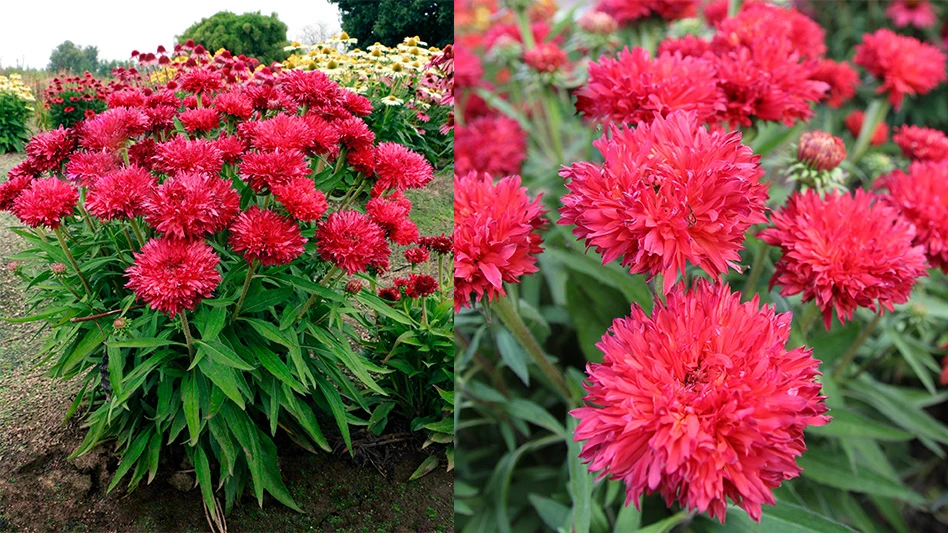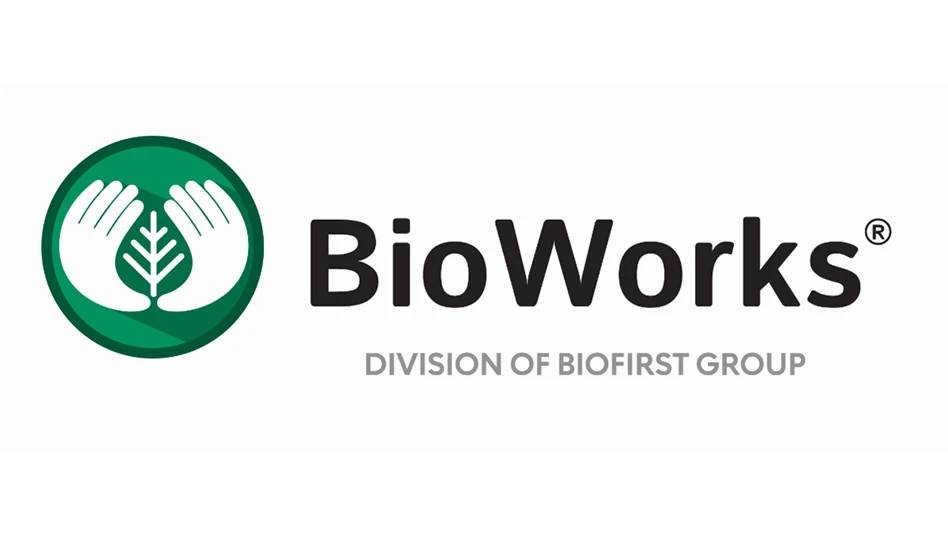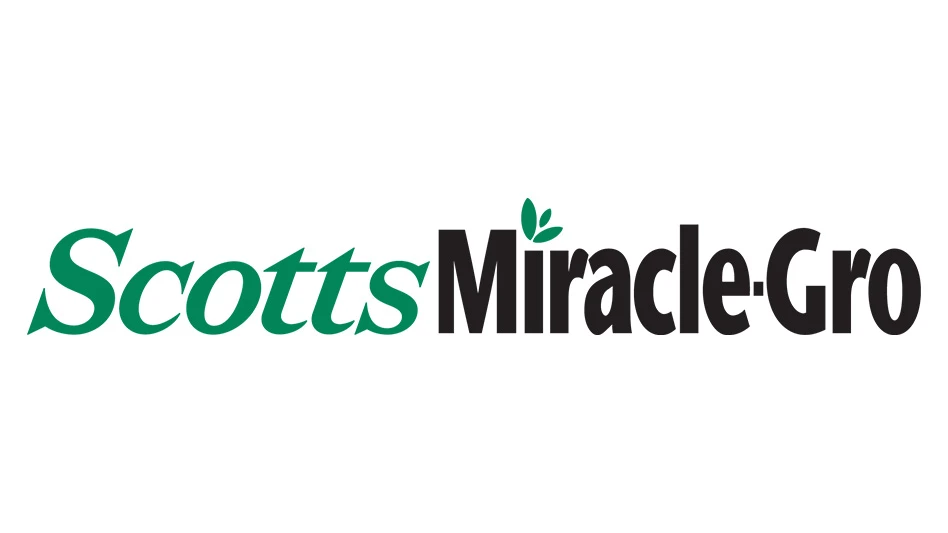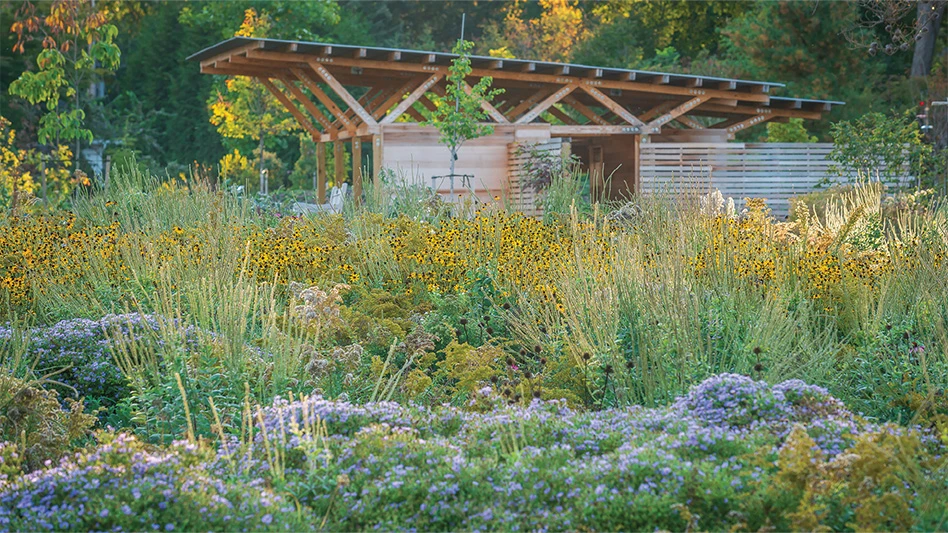 BASF executives Harald Lauke, president, Competence Center for Biological and Effects Systems Research; Markus Heldt, president, crop protection division and Peter Eckes, president, BASF Plant Science Co., updated attendees on BASF’s R&D activity and its plans for future growth at a conference in Chicago. BASF executives Harald Lauke, president, Competence Center for Biological and Effects Systems Research; Markus Heldt, president, crop protection division and Peter Eckes, president, BASF Plant Science Co., updated attendees on BASF’s R&D activity and its plans for future growth at a conference in Chicago. |
At a corporate conference focused on sustainability and innovation, chemical giant BASF discussed its plans to expand its approach to the ornamental market. Jan Buberl, director of BASF’s specialty products department, gave insight to the company’s R&D focus, such as introducing products to help plants deal with drought and heat stress, and resistance management.
Buberl’s comments came during the company’s Agriculture Media Summit, which BASF hosts every two years. It brings together about 100 editors, technical experts and end-users for a day and half of research and market updates.
And while the bulk of BASF’s R&D spending and investment is in the agricultural markets, that investment of time, energy and resources does impact the specialty industries. After an active ingredient is launched in the agricultural markets, it takes about two years to reach the specialty chemical business, said Tom Hill, communications manager for BASF’s specialty products division.
Annually, BASF spends $48.4 million — or about 9 percent — of its research and development budget on the specialty turf, ornamental and pest control markets.
Greenhouse Management’s sister publication, Nursery Management, sat down with Buberl to get his take on the future of the ornamentals market and how growers can position themselves for success amidst the changes.
NM: What do you see as the biggest issues facing the ornamental market in the next 20 to 30 years?
Jan Buberl: Down the road, we see a couple of challenges. First, there are the changing demographics of the ornamentals customer. The new generation has a different appeal to gardening or to buying flowers. So how can the marketplaces create interest from that new ornamentals customer? It requires ornamentals that are easier to take care of. The customer has less time; he or she doesn’t want to spend too much time, so (the plant) shouldn’t be too complex to take care of.
Another issue, and the theme of our conference, is sustainability. It’s becoming a key topic for growers we’re interacting with — making sure you have a production system that is sustainable.
 Top photo: Jan Buberl is director of BASF’s specialty products department, which includes turf, ornamentals, vegetation management and pest control. Bottom photo: Andreas Kreimeyer, member of BASF’s board of executive directors, stressed the importance of finding sustainable solutions to global agricultural issues. Top photo: Jan Buberl is director of BASF’s specialty products department, which includes turf, ornamentals, vegetation management and pest control. Bottom photo: Andreas Kreimeyer, member of BASF’s board of executive directors, stressed the importance of finding sustainable solutions to global agricultural issues. |
The third challenge I would like to highlight is the economical part of the equation. Certainly the downswing of the economy was not favorable for the overall nursery and ornamentals market. It increased the competitiveness in the marketplace. So being efficient and supplying a differentiating product is very critical for our customers.
So: changing demographics of customers, sustainability of the production model, and competitiveness and differentiation. These are the key challenges for greenhouses and nurseries down the road.
NM: How long before some of the ideas from BASF R&D will make an impact in the field?
JB: As in all segments of the marketplace, there are some nurseries and greenhouses that are early adopters. There are customers that see sustainability and the adoption of new innovations as one of their key elements of doing business, because they see an advantage to differentiate (their product offerings) and have a more economically positive outlook of operations. These customers are clearly in the focus of our innovation and sustainability launches.
But what will happen down the road is there will be a snowball effect. These people will change the habits of another segment of the marketplace. We will penetrate the market by focusing first on the early adopter, then the next groups will follow.
NM: Which pests and diseases are as the next big problem?
JB: Downy mildew is certainly one. At BASF, we are very active in resistance management. As far as downy mildew, we have an innovation in the pipeline that we think can manage that. But we will share that down the road — it is in development.
For insects, we have some major resistance management challenges, like to reduce the use of chemicals in integrated pest management.
These are the challenges: resistance management around fungals or downy, and the other case is insect control. That is the key for us, and putting in a system that is sustainable and follow IPM. That is the focus for us, and we will also take that research direction.
To watch the interview, visit www.nurserymanagementonline.com/nm-basf-jan-interview.aspx.
Matt McClellan is managing editor for sister publication Nursery Management.

Explore the July 2012 Issue
Check out more from this issue and find your next story to read.
Latest from Greenhouse Management
- Grant awarded to test western U.S. wood species for use as wood fiber potting substrate
- Pennsylvania Horticultural Society announces 2025 Gold Medal Plant winners
- Oasis Grower Solutions announces new Southeast territory sales manager
- A nation of gardeners: A history of the British horticulture industry
- Last Word with Angela Labrum, Bailey Nurseries
- Iowa plant supplier Plantpeddler building retail complex
- This month's Greenhouse Management magazine is about native plants and sustainability
- The HC Companies, Classic Home & Garden merge as Growscape





